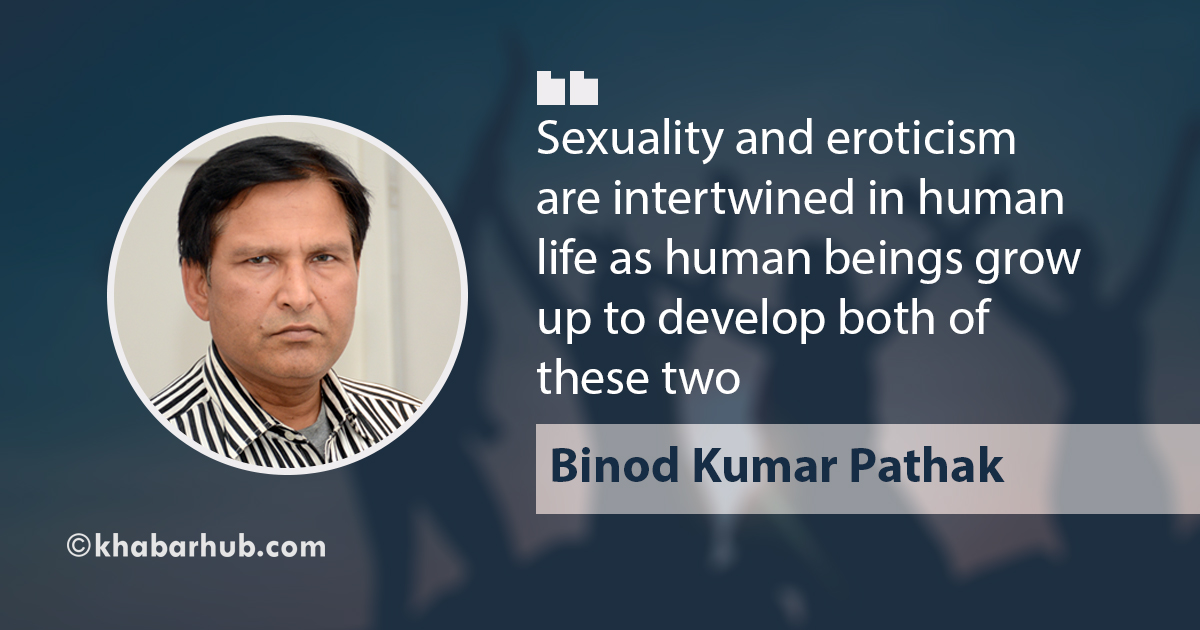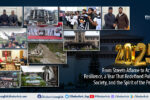Sexuality for a layman is simply understood as a human’s ability to engage in reproductive activities. Human sexuality, like animal sexuality, is directed towards physical reproduction. Biological sexuality is the necessary precondition for human sexuality. However, the very act that is biological in nature for animal kingdom becomes transformed qualitatively in an altogether new dimension in human species due to the presence of eroticism (playing under the dictates of the force of culture).
There is no eroticism in any living beings except for humans. Sexuality and eroticism are intertwined in human life as human beings grow up to develop both of these two. It shows in the way they behave, they dress up, they eat and in whatever choices they make in life. The force of culture brings in several factors to influence the nature and content of human sexuality. These factors for examples are institutions of marriage, family, type of government, laws in force, taboos, a component of fantasy, religious beliefs, emotional attachment (love), erotic postures and dress, ambiance and many others.
Unlike animals’ biology that operates through the force of nature, the biological framework of human sexuality functions under the guidance of culture, religion, and spirituality. Unlike animals, humans have been bestowed with the power of physical sexual energy into higher expressions through poem, prose, novel, dance, drama and highly-evolved pattern of love called compassion. In eastern civilization, both physical sexuality and spirituality have an inversely proportional relationship without condemning either of the two. And, human biology and culture are both necessary for the expression of human sexuality and the creation of human society.
There is no single, all-encompassing strategy, valid for all of society because human sexuality is not only confined to the idea of reproductive function; it also takes into account different sexual politics concerned with the two sexes, same sexes, the different age groups, social classes and much more. There are cultural prescriptions and norms which make decisions on whether eroticism is a medium of human creativity or not. There are scales to judge in cultural context how far eroticism transform human sexuality both in terms of form and expression biologically or otherwise. Does this transformation require social learning or specific sex education for humans? This is a crucial issue which is plaguing human community in Asia. In the animal kingdom, sex contributes to the welfare of the horde, while in human society eroticism contributes to individual self-recognition and paves the way to moral awareness. (Fellmann, Ferdinand 2016: Eroticism)
Even if sexuality is not openly discussed in our family or relationships, it is hard to ignore it. Films and media play a large role in the formation of our identities and norms especially with reference to sexuality. The media help to shape how we think of ourselves, and others, in terms of gender, class, and race. The media help to create and dictate norms about sexuality, amongst other societal norms (Kellner, 2003). From media, we learn what is ‘normal’ what we ‘should’ desire and what not in order to be called normal, deviant and pathological in our approach towards sexual orientation and its expression.
For illustration, the portrayal of female beauty and her empowerment in contrast to male dominance and his aggressiveness differ from society to society. Most of the times films and media are accused of corrupting societal morals by objectifying women thereby triggering a debate in society what actually is the objectification or commodification of woman when her sensual, erotic and sexual sides are explored and captured; isn’t it woman’s body adds to the strength of her existence and so on. When a woman goes topless, is it a sexual act or does it promote fetishism? Even if it is a sexual act what is so wrong in it? Is being erotic a ‘sin’? No definite answer comes forth as once again cultural perspectives to human sexuality and depiction of both man and woman in our society come into play.
Sexually explicit films are made specifically to sexually arouse viewers. And, the design and purpose of the film are very obvious as to condemn it under any theoretical perspective pertaining to ethics and morality. In European and North American films, genital nudity, particularly male frontal nudity does not raise any frown anymore. Nobody comes forward to raise the issue of vilification of man’s honor and objectification of the male’s body. Even female nudity (under different parameters of physical beauty) particularly toplessness is much more acceptable today. The idea of what is ‘good’ and what is ‘bad’ is a social construction, and much of this social construction is created through films (and media).
What is portrayed in films and media does not necessarily reflect the reality of society; however, the ways in which characters are developed, plots played out with songs and dances and topics focused on (or not) certainly provide insight into underlying attitudes about sexuality and LGBTQ individuals. In the twenty-first century, this has become more pronounced due to advances in technology where scenes relating to eroticism and sexuality are captured with close distance on a bigger frame in films highlighting changes in responses to erotic and sexual contents expressed at both physiological and emotional level.
Nepalese cinema is not untouched by this trend as sexual contents in heterosexual relations and man opposite woman weaves the fantastic imageries in minds of viewers. European societies exhibit more open attitudes toward sexuality than the Asian and American societies when it comes to using nude scenes in films. Full frontal nudity of both men and women is much more common and far less stigmatized in Europe and America than it is in Bollywood and Kollywood (Nepalese film industry). The decision to do a nude or so-called provocative scene in Nepalese cinemas can dramatically impact an actor’s reputation and invite harsh criticism from custodians of cultural values and women activists for objectifying women on screen least of all expression of nudity under the parameters of human beauty or body art (under the banner of humanism). Directors are also not very sensitive as to how to use motion picture cameras to rove around the human body both male and female in a way that it does not provoke the vulgarity and depravity of senses in human mind.
Invariably, all the nations have censorship boards with the power to ‘cut’ the scenes or mold the dialogues or impose fines when they deem the content of a film is sexually inappropriate to be judged from the standard of their society in that time period. In this way, American or French censorship board has different yardsticks to judge what actually the sexually inappropriate content is in a film than the censorship board operating in India, Nepal, Pakistan, Saudi Arabia, Turkey, and Russia for that matter.









Comment